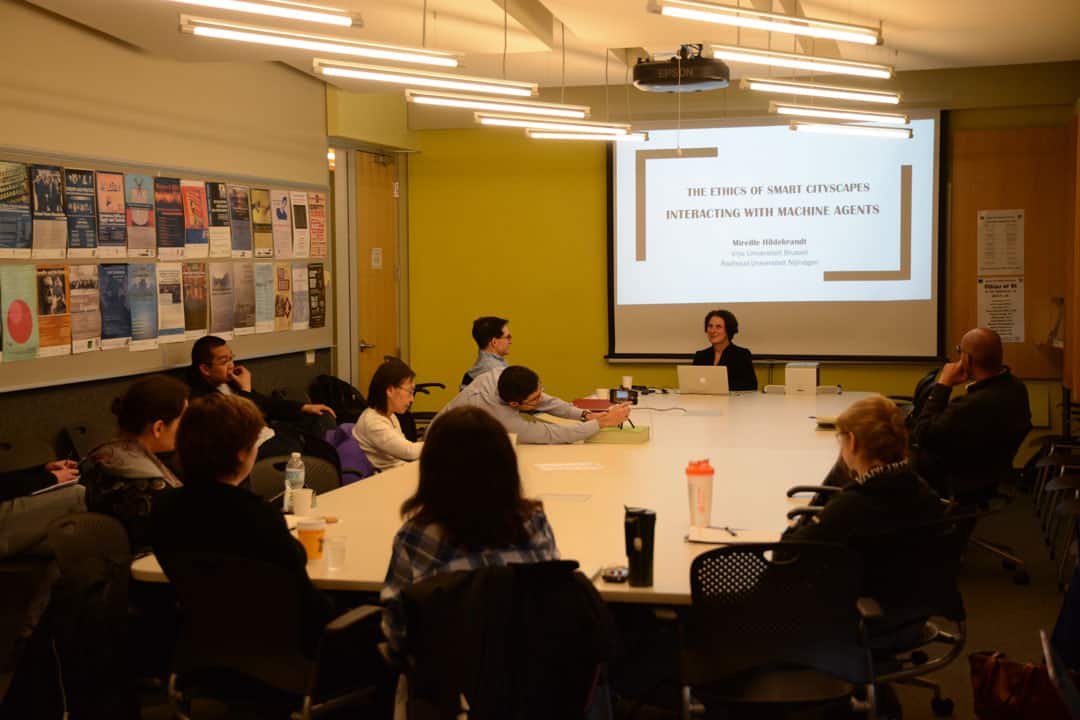On February 20, the University of Toronto’s Centre for Ethics hosted a presentation by Mireille Hildebrandt called “The Ethics of Smart Cities,” on how the merging of the offline and online worlds relates to the concept of smart cities, which use technology and gather data to maximize efficiency and sustainability.
Hildebrandt is a Dutch research professor at the Faculty of Law and Criminology at Vrije Universiteit Brussel in Belgium.
In her presentation, Hildebrandt discussed what she calls the “Onlife,” which is the merging of the online and offline worlds. A key example of the Onlife is a project in the Netherlands called Stratumseind 2.0.
Stratumseind is a street in the Dutch city of Eindhoven where researchers are implementing technological data collection techniques to design and engineer a city that is safer, cleaner, and allows for more effective intervention — the ideal smart city. However, there are ethical questions around this concept — anything one does within the boundaries of this street is recorded and analyzed. Ideally, Stratumseind 2.0 is supposed to function as a ‘living lab’ for the purposes of scientific research and innovation.
Hildebrandt broke down the smart city model into five main tenets. Firstly, a smart city uses a digital infrastructure that is standardized and safe. Secondly, it provides room for research and experimentation, allowing for collaboration between the public and private sectors. Thirdly, it requires a new government system, where officials work directly with citizens to achieve goals. Fourthly, it will ideally promote and improve education and increase employment. Finally, the smart city will work as a network with other smart cities, and using this regional collaboration, it will be more effective and efficient at creating change and progress.
With such an ideal city system come serious questions surrounding the Onlife, such as its extensive ‘datafication’; that is, everything in the city can be represented by a set of information found online. Examples include checking the food safety ratings of a restaurant or identifying people who need assistance through social security data.
Then, Hildebrandt asked whether there was really a distinction between online and offline, or if it is even possible to be offline. Hildebrandt explained that these ethical concerns are often swept under the rug due to the benefits of hyperefficiency.
The use of artificial intelligence in these cities is also of increasing concern, said Hildebrandt. Too much data can result in algorithms finding patterns in data where there are none in real life.
Additionally, the Onlife requires an “agonistic local democracy,” as Hildebrandt put it. This also poses ethical questions, such as who controls the collected data, and what role the government should play in the distribution of the data.
According to Hildebrandt, the answer to these questions is simple: a collaboration between the public and private sectors, resulting in transparency and access to all data. However, contracts, legal agreements, and money may prevent this from occurring.
This conundrum between the ethical problems and the great advantages of smart cities may play a major role in the lives of the current generation of students. According to Hildebrandt, discussion between the previous generation, who have lived in a different time, and the younger generation who only know of the high-tech world, will be critical to future progress.


